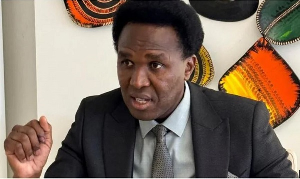The Ministry of Fisheries and Aquaculture Development has said the country is on course to achieve her ambitious target of producing 100,000 tons of farmed fish in the next couple of years.
Mrs Benita Sena Okity-Duah, Deputy Minister of Fisheries and Aquaculture Development, who said this at a Ghana Partnership Forum organized by the Food and Agriculture Organization (FAO) and the Netherlands Development Organization in Tamale, explained that aquaculture production trends in the country had increased over the past few years.
She said this testified to the fact that the country had the potential to improve her current fish farming output to make even greater contributions to global and national fish requirements.
The two-day forum, attended by development partners, national partners, traditional authorities and leadership of farmer based organizations, was to deliberate on, make commitments and agree on how best to collaborate to make the Community Development Centres (CDCs) contribute to rural development.
The government and the FAO are promoting the establishment of CDCs starting with the Northern and Central regions to implement sustainable activities to the benefit of farmers, fisher folks, herders and communities in the fight against poverty and food insecurity by promoting entrepreneurial and capacity building activities.
Mrs Okity-Duah called for building of synergies and complementarities amongst all institutions including the private sector and non-governmental organizations in increasing production and productivity whiles bettering the lives of rural community dwellers engaged in fish production.
She said rural development and agricultural growth represented likely pathways to get out of poverty and food insecurity adding “If we want to move our people out of poverty, we will have to pool efforts to support investments in the agricultural sector.”
Dr Lamourdia Thiombiano, FAO Country Representative, said “FAO aims to make the CDCs a centre of excellence open to partners as a hub for collaboration where their different areas of comparative advantages complement or further promotes other relevant operations or intervention.”
Click to view details



Business News of Thursday, 12 March 2015
Source: GNA
Gov’t to achieve 100,000 tons fish production
Entertainment
















